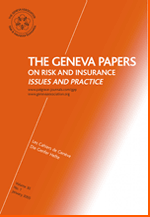
GENEVA PAPERS ON RISK AND INSURANCE-ISSUES AND PRACTICE
Scope & Guideline
Transforming Insights into Actionable Insurance Strategies
Introduction
Aims and Scopes
- Risk Management and Insurance Economics:
The journal extensively covers topics related to risk assessment, management strategies, and economic implications of insurance products. This includes the evaluation of insurance markets, pricing strategies, and the role of insurance in economic stability. - Health and Longevity Risk:
A significant focus area includes health insurance and longevity risk, exploring how demographic changes affect insurance markets and the development of innovative insurance solutions tailored to health-related risks. - Technological Innovations in Insurance:
The journal emphasizes the impact of technological advancements, such as big data analytics, machine learning, and digitalization, on the insurance industry. Studies often investigate how these technologies enhance operational efficiency and customer engagement. - Microinsurance and Financial Inclusion:
Research in this area addresses the role of microinsurance in promoting financial stability and resilience among low-income populations, particularly in developing countries. This includes analyses of adoption factors and the impact of microinsurance on poverty alleviation. - Environmental and Climate Risk:
The journal also explores the intersection of environmental issues and insurance, focusing on how climate change and natural disasters influence risk assessment and insurance product development. - Regulatory and Policy Studies:
The Geneva Papers examines the regulatory frameworks surrounding insurance practices, including the implications of policies like Solvency II and the effects of economic policy uncertainty on insurance markets.
Trending and Emerging
- Cyber Risk and Cyber Insurance:
As cyber threats become increasingly prevalent, the journal has seen a surge in research related to cyber risk management and insurance solutions, highlighting the need for effective coverage in a digital age. - Impact of COVID-19 on Insurance:
The pandemic has catalyzed a significant body of work examining its effects on various insurance sectors, particularly regarding business interruption insurance and the regulatory responses to health crises. - Sustainability and Green Insurance:
There is a growing emphasis on sustainability in insurance practices, with studies exploring how insurance can support environmental initiatives and adapt to climate change risks. - Technological Integration in Insurance:
Recent publications highlight the integration of innovative technologies, such as AI and data analytics, into insurance practices, focusing on efficiency, risk assessment, and customer engagement. - Health Insurance Innovations:
Research on innovative health insurance products, including the application of IoT technology and personalized health plans, is becoming more prevalent, reflecting the evolving needs of aging populations.
Declining or Waning
- Traditional Life Insurance Models:
Research focused on conventional life insurance products has seen a decline, possibly due to the growing interest in innovative insurance solutions that address modern consumer needs and preferences. - Agricultural Insurance:
While still present, the frequency of studies related to agricultural insurance and its effectiveness appears to be reducing, potentially as researchers shift their focus to more pressing global risks and technologies. - Behavioral Economics in Insurance:
The exploration of behavioral economics principles applied to insurance purchasing decisions has decreased, perhaps overshadowed by more immediate concerns such as technological impacts and regulatory changes. - Global Insurance Markets:
Comparative studies of global insurance markets have become less common, as the focus narrows toward specific regional issues or localized case studies that address unique challenges. - Historical Analyses of Insurance Practices:
There seems to be a waning interest in historical analyses of insurance practices, as contemporary issues such as digital transformation and climate change take precedence.
Similar Journals
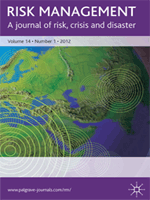
Risk Management-An International Journal
Elevating Risk Management to New HeightsRisk Management - An International Journal is a premier publication dedicated to advancing the understanding and methodologies of risk management across various sectors, including business, finance, and economics. Published by Palgrave Macmillan Ltd in the United Kingdom, this journal not only maintains a robust presence in the scholarly community but also ranks in the Q2 category for Business and International Management and Finance, as well as Q3 for Economics and Econometrics and Strategy and Management. With its diverse scope and commitment to high-quality research, the journal provides essential insights for academics, practitioners, and students alike, helping to shape the future of risk management practices globally. While not an open-access journal, its rigorous peer-review process ensures that only the most impactful and relevant studies are featured. Covering topics that converge the years from 2006 to 2024, Risk Management represents a vital resource for those looking to deepen their knowledge in this critical field.

Annals of Economics and Finance
Exploring the Intersection of Economics and Finance.Annals of Economics and Finance is an esteemed academic journal published by Wuhan University Journals Press, focusing on the fields of Economics and Finance. Established in 2000, this journal serves as a platform for scholars to disseminate their research findings and insights, contributing to the development of these disciplines through rigorous peer-reviewed articles. Despite currently holding a Q4 ranking in both Economics and Econometrics and Finance categories (2023), it strives to enhance its impact on the academic community and policy-making audiences. While not Open Access, the journal seeks to cultivate a deeper understanding of vital economic theories and financial practices, thereby offering invaluable resources for researchers, professionals, and students alike. With its broad scope, the Annals of Economics and Finance is poised to play a crucial role in shaping contemporary economic discourse up to 2024 and beyond.
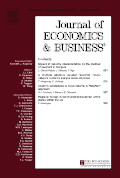
JOURNAL OF ECONOMICS AND BUSINESS
Navigating the Intersection of Theory and PracticeJOURNAL OF ECONOMICS AND BUSINESS, published by Elsevier Science Inc, stands as a leading platform for the dissemination of research in the fields of economics and business management. With an ISSN of 0148-6195, this journal is indexed in Scopus and boasts impressive rankings, including a position in the top 20% for both Finance and Economics and Econometrics. With a consistent publication history since 1978, it has become a vital resource for scholars and practitioners alike, providing insights into contemporary issues and emerging trends in the economic landscape. The journal, categorized in the Q2 quartile for both Business and Economics, invites rigorous research that advances theoretical and practical knowledge. While it operates under a subscription model, its notable impact factor reflects its significance and relevance in addressing critical questions within the business and economics domains. Whether you are a researcher, a business professional, or a student eager to deepen your understanding, the JOURNAL OF ECONOMICS AND BUSINESS is an essential resource for your academic and professional journey.
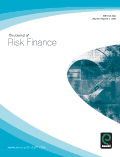
Journal of Risk Finance
Advancing insights in risk management and finance.The Journal of Risk Finance, published by Emerald Group Publishing Ltd, is a premier academic journal dedicated to advancing the understanding of risk management and finance practices since its inception in 1999. With a strong foothold within the Q2 rankings in both Accounting and Finance categories, it proudly holds a significant place in the scholarly landscape, ranking #54 out of 317 in the Scopus Economics and Finance category, placing it in the 83rd percentile. The journal aims to facilitate the exchange of innovative research and practical insights, catering to an audience of researchers, professionals, and students eager to explore contemporary issues in risk finance. While not an open access journal, it provides numerous access options, ensuring that essential findings reach a broad readership. Set in the United Kingdom and covering publications up to 2024, the Journal of Risk Finance continues to be an indispensable resource for those committed to this critical field.
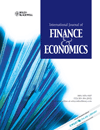
INTERNATIONAL JOURNAL OF FINANCE & ECONOMICS
Exploring the Frontiers of Economic ResearchInternational Journal of Finance & Economics, published by Wiley, is a premier academic journal that serves as a vital resource for researchers and professionals in the fields of finance, accounting, and economics. With an impressive impact factor and a reputation for excellence, the journal is recognized in the 2023 Scopus rankings, placing in the top quartiles across multiple categories, including Q2 in Accounting, Economics, and Finance. The journal has been a significant contributor to academic discourse since its inception in 1996, with its converged years extending to 2024, thereby ensuring the continuous advancement of knowledge in these critical areas. Although it operates under a traditional subscription model, its comprehensive articles provide insightful analyses, empirical research, and theoretical advancements that cater to a diverse audience—from seasoned scholars to emerging students in the field.
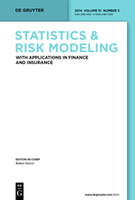
Statistics & Risk Modeling
Exploring innovative methodologies for risk modeling.Statistics & Risk Modeling is a distinguished journal published by WALTER DE GRUYTER GMBH, focusing on the intricate relationships between statistical methodologies and risk assessment techniques. With a strong academic foundation, the journal has been an influential platform in its field since its inception, converging contributions from 1982 to 2002 and again from 2011 to 2024. This journal is currently ranked in the Q3 category in both Modeling and Simulation and Statistics and Probability, reflecting its commitment to advancing knowledge and promoting robust research in statistics, probability, and uncertainty analysis. Although it offers a traditional subscription model, its significant contribution to the community is underscored by its increasing visibility in Scopus rankings, where it stands in the 44th percentile for Decision Sciences and Statistics. By comprehensively addressing contemporary issues in statistical theory and its practical applications, Statistics & Risk Modeling serves as an essential resource for researchers, professionals, and students aiming to deepen their understanding of statistical science and its implications in risk management.

Anales del Instituto de Actuarios Espanoles
Transforming Challenges into Opportunities in Actuarial ScienceAnales del Instituto de Actuarios Españoles is a prestigious journal dedicated to advancing the field of actuarial science and related disciplines. Published by the Instituto de Actuarios Españoles, this journal serves as a vital platform for researchers, practitioners, and students aiming to share innovative methodologies, comprehensive analyses, and groundbreaking research that contribute to the actuarial profession. Although not an open-access journal, its rigorous peer-review process ensures high-quality publications that have garnered respect within the academic community. With an ISSN number of 0534-3232 and an E-ISSN of 2531-2308, Anales del Instituto de Actuarios Españoles plays a crucial role in disseminating knowledge that shapes actuarial practices and policies, thereby enhancing the effectiveness of the profession in addressing contemporary challenges.
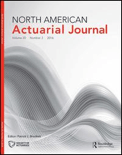
North American Actuarial Journal
Innovative Contributions Shaping the Future of Actuarial PracticesNorth American Actuarial Journal is a prominent publication in the fields of Economics and Econometrics, Statistics and Probability, and Statistics, Probability and Uncertainty, published by Routledge Journals, Taylor & Francis Ltd. The journal, with the ISSN 1092-0277 and E-ISSN 2325-0453, covers critical advancements in actuarial science over the years from 1997 to 2024. With a strong Q2 ranking in multiple categories for 2023, the journal positions itself as a vital resource for researchers and practitioners looking to stay abreast of current trends and methodologies in actuarial practices. The journal’s focus on providing a platform for high-quality research makes it indispensable for professionals and academics alike, offering insightful contributions that influence the actuarial field's evolution. While it currently does not offer open access options, its rigorous peer-review process ensures the integrity and relevance of its published works. Researchers, professionals, and students in actuarial science will find this journal to be a valuable asset for both their studies and professional development.

International Journal of Financial Studies
Connecting scholars and practitioners in finance.The International Journal of Financial Studies is a premier publication dedicated to advancing the field of finance through open-access research. Published by MDPI based in Switzerland, this journal offers researchers, professionals, and students a platform to disseminate their findings in an accessible format since its establishment in 2013. With its ISSN of 2227-7072 and a commendable impact reflected in its Q2 ranking in finance, it occupies an influential position among finance-related journals, as evidenced by its 65th percentile rank in Scopus. The journal encompasses a wide array of topics in finance, making it essential reading for those seeking to stay abreast of current research trends and methodologies. As an open-access journal, all articles are freely available, significantly enhancing the visibility and reach of published studies, which is crucial for fostering collaboration and innovation within the global financial community. Published continuously until 2024, the International Journal of Financial Studies is not just a source of knowledge; it is a critical contributor to the progression of financial scholarship.
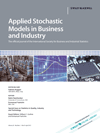
APPLIED STOCHASTIC MODELS IN BUSINESS AND INDUSTRY
Unlocking Insights Through Stochastic InnovationApplied Stochastic Models in Business and Industry, published by Wiley, is a preeminent journal dedicated to advancing the field of stochastic modeling in various business and industry contexts. With an ISSN of 1524-1904 and an E-ISSN of 1526-4025, this journal serves as a vital platform for researchers and practitioners aiming to leverage stochastic techniques to address complex decision-making and operational challenges. The journal holds prestigious rankings, including Q2 in Business, Management and Accounting, and has converged years spanning from 1999 to 2024. It is distinguished by its wide scope, focusing on all aspects of modeling and simulation, as well as decision sciences and operations research. Although it does not operate as an open-access journal, its significant impact factor and Scopus rankings ensure that the valuable insights published within reach a broad audience. By fostering high-quality research and discourse, Applied Stochastic Models in Business and Industry plays a crucial role in driving innovation and excellence in its fields.